Helping children develop good eating habits starts at infancy. New feeding guidelines have been released that can help caregivers know what and how best to feed infants and toddlers. These guidelines help make sure that children are getting enough, but not too much of the right foods, so we can reduce their risk of developing health problems later in life.
Feeding Guidelines for Infants and Young Toddlers: A Responsive Parenting Approach
Topics: Best Practices, Health & Safety, News
Continue ReadingCCAoA Celebrates American Heart and Black History Months
Heart disease and strokes are the #1 killers of women in the United States Roughly every minute, another woman dies, according to the American Heart Association (AHA). Although heart disease affects women of all races and ethnicities, rates are especially high for African-American women.
Here’s a little story to inspire you:
Topics: Health & Safety
Continue ReadingProvider Health Spotlight on Yolanda Gilbert
Topics: Best Practices, Health & Safety
Continue ReadingHealth Resource Spotlight: Nutrition Education
Spotlight
Nutrition Education: Resources on the Early Childhood Learning and Knowledge Center (ECLKC) website.
Topics: Best Practices, Health & Safety
Continue ReadingHelping Children Deal with Stress
Topics: Health & Safety
Continue ReadingTake Action Against an Undetectable Gas: It’s National Radon Action Month
This month we are acknowledging National Radon Action Month. We encourage you to test your home and workplace for radon. Radon is a naturally occurring radioactive gas released in rock, soil, and water from the natural decay of uranium. You can’t see, smell, or taste radon, but it could be present at a dangerous level in your home, workplace or child care facility. If high radon levels are detected, you can take steps to fix it and protect yourself and your family.
Topics: Best Practices, Health & Safety
Continue Reading








